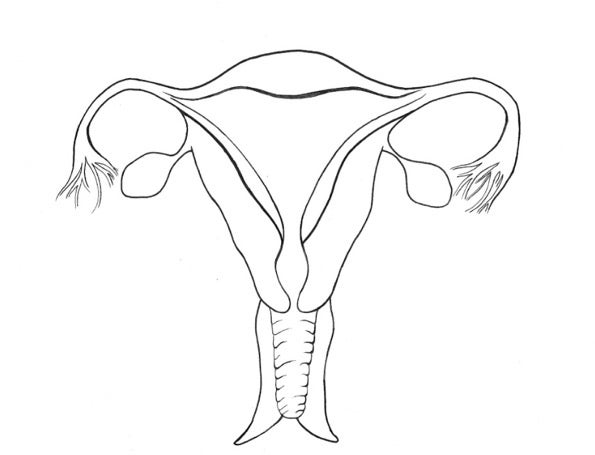
The ovaries are the female gonads, or sex glands. These glands carry out two important functions: ovulation, and the production and secretion of sex hormones. Ovulation is the process of releasing an ovum, or egg, to prepare a female for possible implantation and consequent impregnation. Sex hormones regulate the process which dictates ovulation, known as the menstrual cycle, and as sexual processes. Unfortunately, there can be complications with either the ovum or the ovaries.1 This article outlines how they are involved in sexual and reproductive functions and helps individuals familiarize themselves to these fundamental structures and their importance.
The Ovaries
The ovaries are the female gonads, which are defined as the primary reproductive organs in a person’s body. The gonads produce gametes which allow an individual’s genetic information to be passed down from generation to generation. For females, the ovaries produce gametes called ova, or eggs. These eggs are produced in the ovaries and then travel through the female’s internal reproductive system with the sole purpose of fertilization by sperm (the male gamete). If successful, a fertilized egg will implant on the uterine wall, and eventually produce a fetus which develops into a baby.1
Anatomy
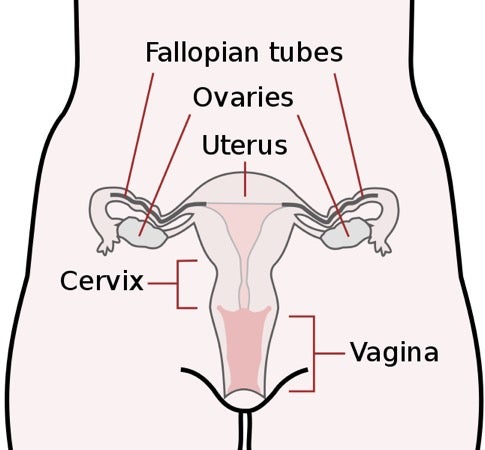
The ovaries are a pair of egg-shaped organs located on either side of the uterus. Inside the ovaries are many follicles, or fluid filled sacs, each containing a female gamete (or egg). Once an egg is released, that follicle will release the sex hormones estrogen and progesterone. The egg will travel from the ovary to the uterus through the fallopian tubes. The ovaries therefore act as the beginning of each egg’s journey inside a female.1
Ovum
An ovum, the singular of ova, is a female’s gamete. A gamete is a sexual reproductive cell containing the genetic material necessary to create offspring. At birth, a female has approximately one million undeveloped ova in each of her ovaries; many of these deteriorate and are reabsorbed by the body. Unlike male sperm, however, females are unable to generate new ova. By the time a female reaches puberty (around age 12), she has only around 200,000 ova in each ovary.1 The number of ova in a female’s ovaries continues to decrease at an accelerating rate as she grows older and undergoes menstruation.
Ovulation

Ovulation is the process of releasing a matured egg from a follicle within an ovary. This is the first stage of the menstrual cycle, and is regulated by sex hormones produced by both the ovaries and the adrenal glands on top of each kidney. Typically, the left and right ovaries take turns releasing one ovum during each menstrual cycle, approximately every 28 days. During this stage, each oocyte (or undeveloped ova) is surrounded by supporting cells, which help the ovum develop; this casing is known as the “follicle.” After an ovum is released during ovulation, cilia-lined fimbria (finger-like structures) catch the egg and channel it to the connecting fallopian tube (also called the oviduct). While in the oviduct, the egg travels at a rate of about one inch every 24 hours. At this point in the cycle the egg has the potential to be fertilized by the sperm (male gamete). An egg can be fertilized in the oviduct 24 to 48 hours after ejaculation. If a sperm and egg meet, the sperm buries its nucleus into the egg in a process known as fertilization. The fertilized egg then develops into a zygote and implants into the endometrium of the uterus where it continues to develop. If the egg is not fertilized by a sperm, it passes through the female’s cervix and out through her vagina with the endometrium that sheds during menstruation.1
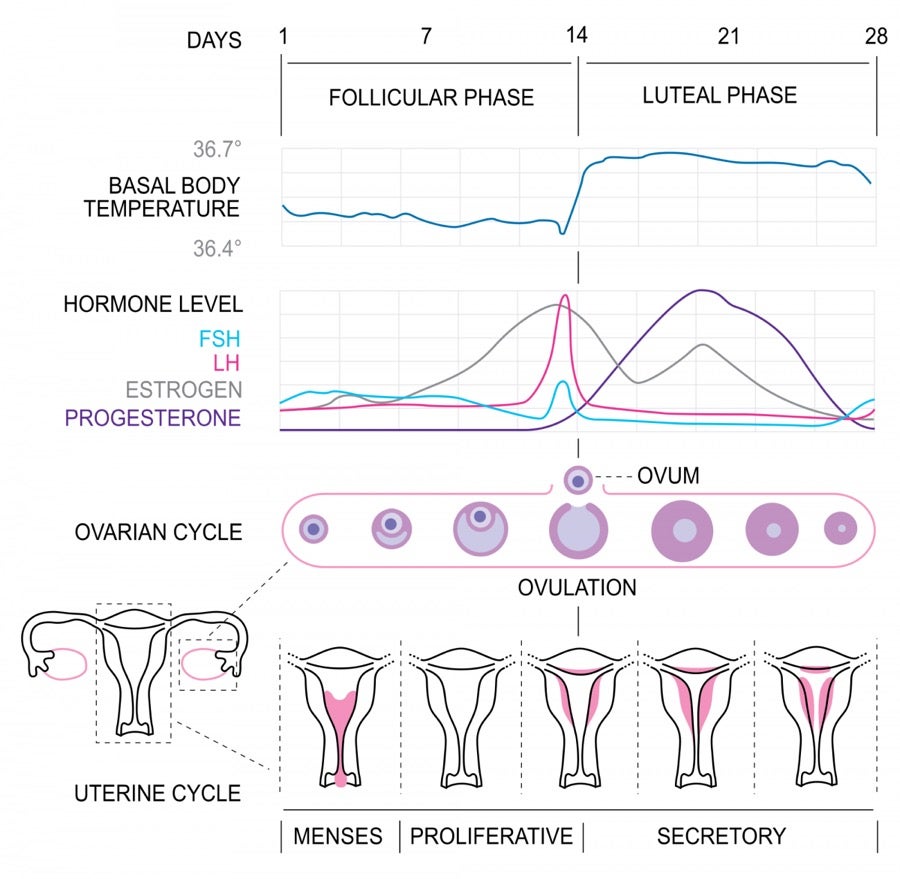
Hormones
The ovaries release the sex hormones estrogen and progesterone. Estrogen is responsible for feminine features such as breasts and pubic hair and reproductive processes such as the menstrual cycle. Estrogen production mainly occurs at the ovaries. Then, the hormone is released into the blood stream to affect the entire body.2 Progesterone is produced from a follicle after an egg has been released from that follicle. Progesterone dictates the menstrual cycle. It thickens the endometrial lining of the uterus to prepare for potential implantation of a fertilized egg.3
Diseases and Complications
Unfortunately, the ovaries can develop various diseases and complications. Fortunately, most have treatment options available.
Common Problems
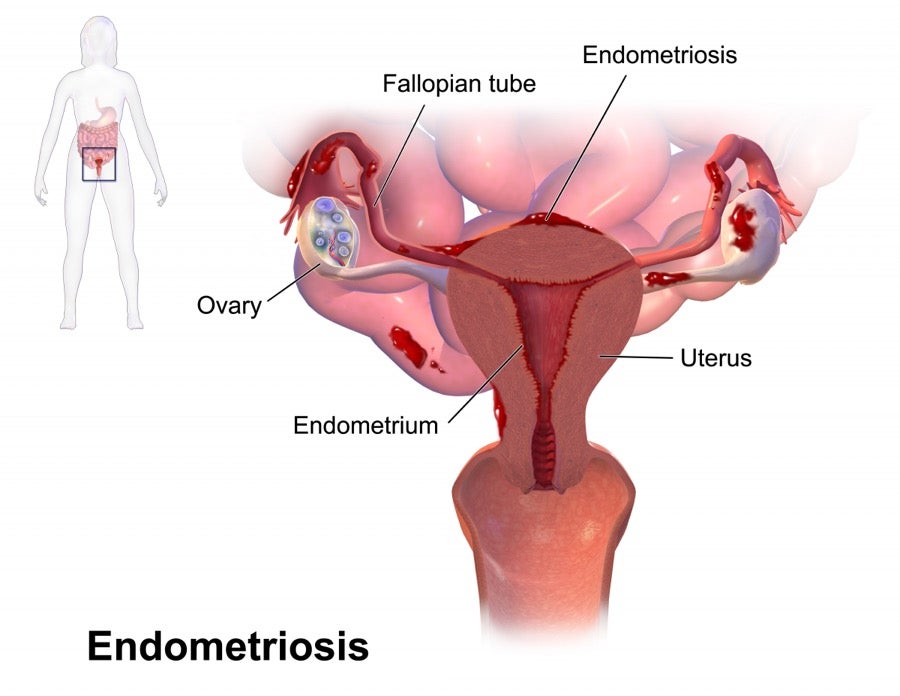
Endometriosis is the development of uterine tissue outside of the uterus. This abnormal tissue develops on the ovaries. These growths are benign (non-cancerous), but can become dangerous if left untreated. The tissue can begin to grow into the ovaries, trapping blood and forming cysts. Females with this disease can have painful cramps and bleeding between menstrual cycles.4 Polycystic ovarian syndrome (PCOS) is another disease, often caused by hormonal imbalances. PCOS is the result of eggs not being released over time. Instead they become fluid filled sacs, which usually disappear on their own. PCOS is the leading cause of female infertility and is marked by irregular or missed periods when the cysts do not go away on their own.5
Serious Problems
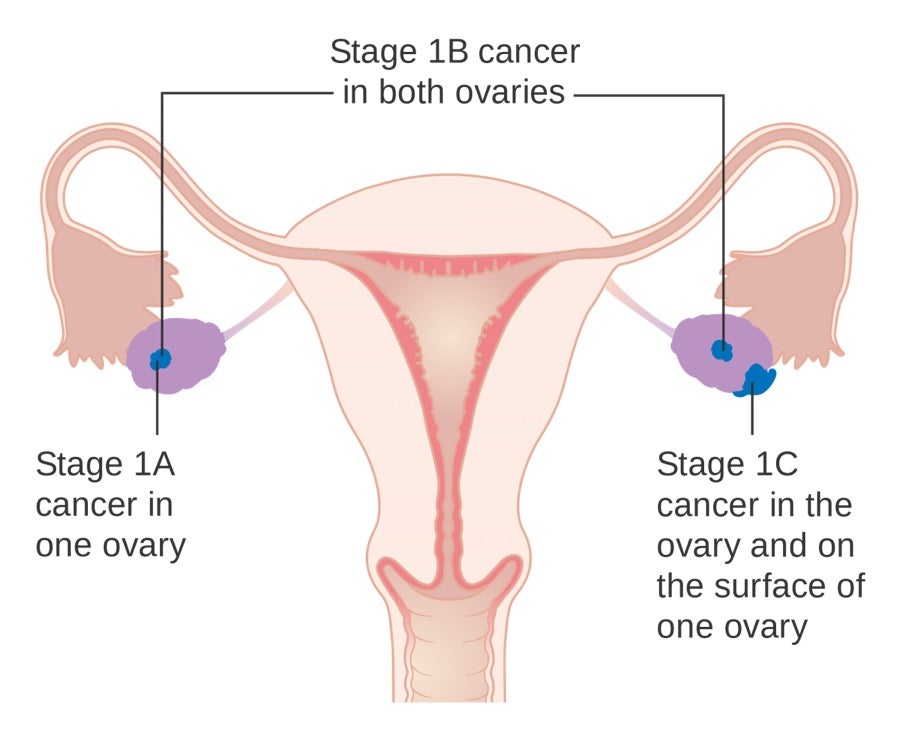
Pelvic inflammatory disease (PID) is an infection that can form in an individual’s ovaries, uterus, or oviducts. This occurs when bacteria from the vagina travel to these organs, usually caused by chlamydia or gonorrhea. Symptoms are usually mild, so the best treatment is to get routinely tested for the STIs which can cause this disease. This disease, if left untreated, can lead to infertility.6 Ovarian cancer occurs when the cells of the ovaries or nearby fallopian tube begin to divide out of control. These cells begin to reach other organs, causing pain in the abdomen. There are several types of ovarian cancer, depending on which cells are dividing out of control. Forms of treatment include surgery, chemotherapy, or radiation therapy.7 Blighted ova are eggs that have undergone irregular cell division and contain problematic chromosomes (genetic material). In blighted ova, the gestational sac grows around the ovum, but the embryo does not develop. This is termed an “anembryonic pregnancy.” Blighted ova cause one out of every two miscarriages during the first trimester. A female with blighted ova may experience abdominal cramps, vaginal bleeding or spotting, or a period that is heavier than usual.2 She should contact a doctor if she experiences any of these symptoms during her pregnancy.8 An oophorectomy is the removal of one or both ovaries and the nearby fallopian tubes. This is necessary if abdominal pain is overwhelming, or cysts grow too large. Sexual activity and daily life can begin soon after.9
Ova and Infertility
Ova quantity and quality decrease as a female grows older. The rate of deterioration increases when the female reaches 35 years of age.3 Egg loss, or “loss of ovarian reserve,” is often blamed for a female’s infertility (inability to reproduce). However, there are many other issues that complicate a female’s ability to conceive a child. Damage to the oviducts, hormonal irregularities, cervical conditions, and uterine problems also affect a female’s fertility.10

Concluding Remarks
The ovaries are an important part of the female’s internal reproductive system, controlling reproductive and sexual processes. The ovaries produce both eggs and sex hormones, which help develop feminine features and regulate the menstrual cycle. The ovaries and eggs can develop various diseases, some of which can be quite serious. We hope knowledge regarding the ovaries and their function can help individuals better understand physical processes such as menstruation and pregnancy.
References
- Baldwin, Janice, Baldwin, John, and LeVay, Simone. Discovering Human Sexuality. Sunderland: Sinauer Associates, Inc., 2018. Print.
- “Estrogen” | Hormone Health Network. 2018. Web. Date Accessed: 16 October 2018.
- “Progesterone” | Hormone Health Network. 2018. Web. Date Accessed: 16 October 2018.
- “Endometriosis.” Womenshealth.gov, 16 Mar. 2018. Date Accessed: 16 October 2018.
- “Symptoms.” PCOS Awareness Association. Date Accessed: 16 October 2018.
- Parenthood, Planned. “Pelvic Inflammatory Disease (PID) | Signs of PID Infection.” Planned Parenthood. Date Accessed: 16 October 2018.
- “What Is Ovarian Cancer?” American Cancer Society. Date Accessed: 16 October 2018.
- “Blighted Ovum: Symptoms, Causes and Prevention.” American Pregnancy Association, 20 July 201. Date Accessed: 16 October 2018.
- “Emory University School of MedicineDepartment of Gynecology and Obstetrics.” Laparoscopic Salpingo-Oophorectomy. Date Accessed: 16 October 2018.
- ASRM, Staff A. “Resources.” ASRM Patient Fact Sheet: Reproductive Aging in Women. American Society for Reproductive Medicine, 2012. Web. Date Accessed: 16 October 2018.
Last Updated: 1 November 2018.
